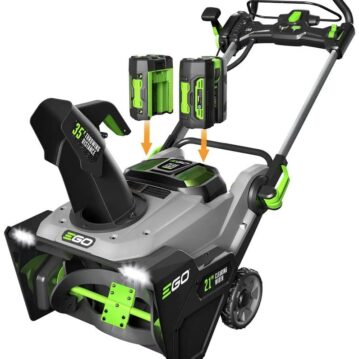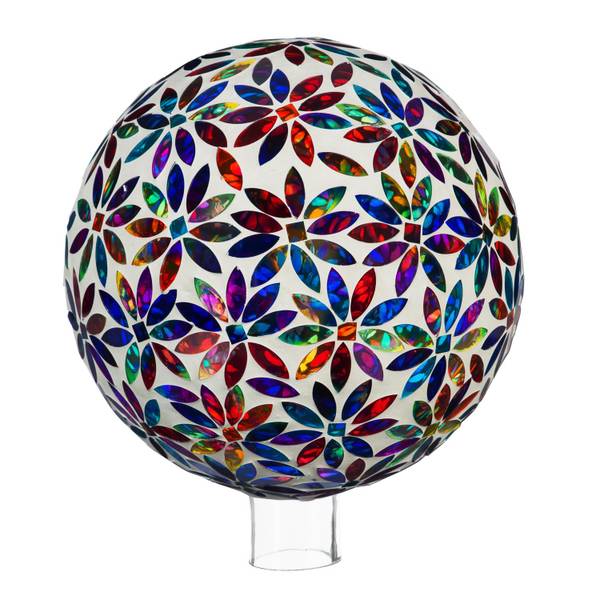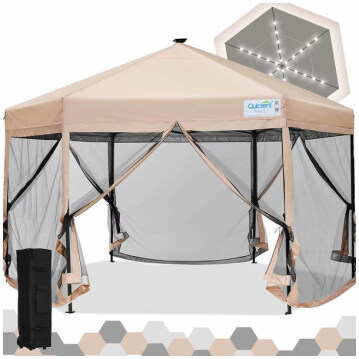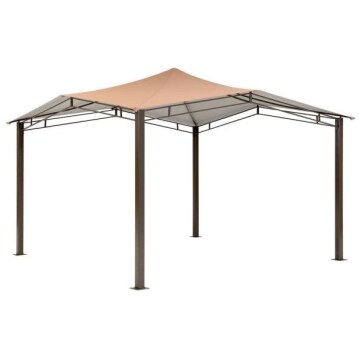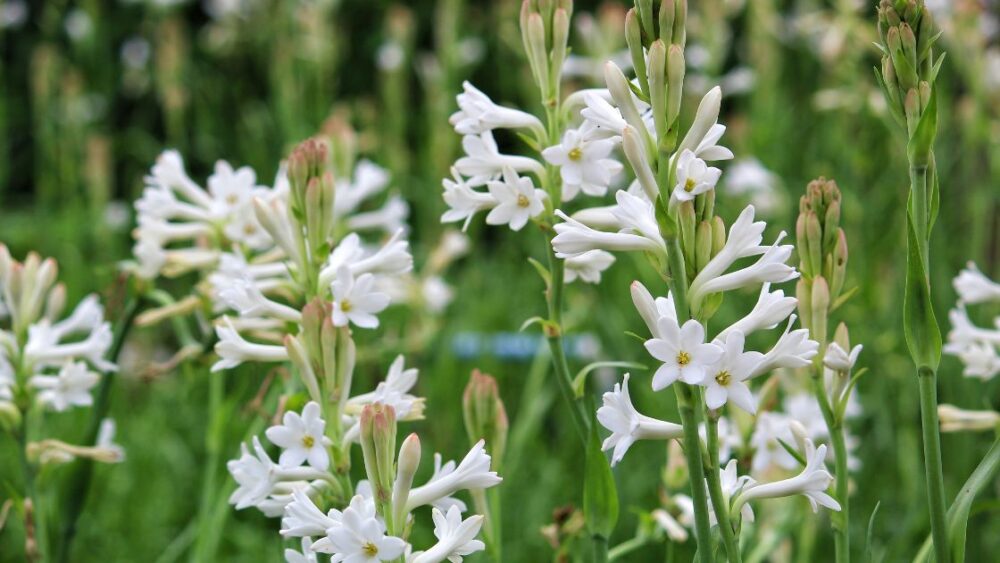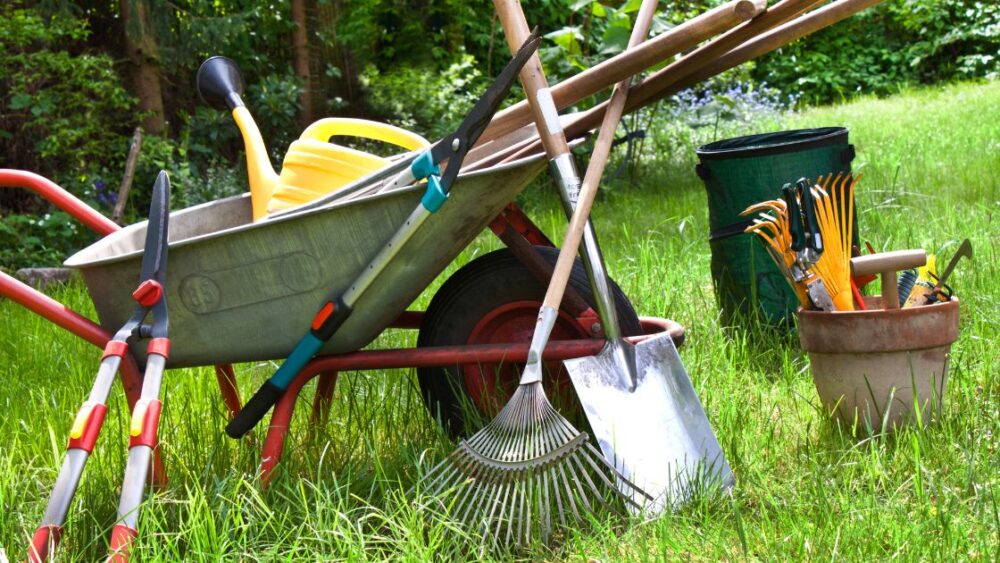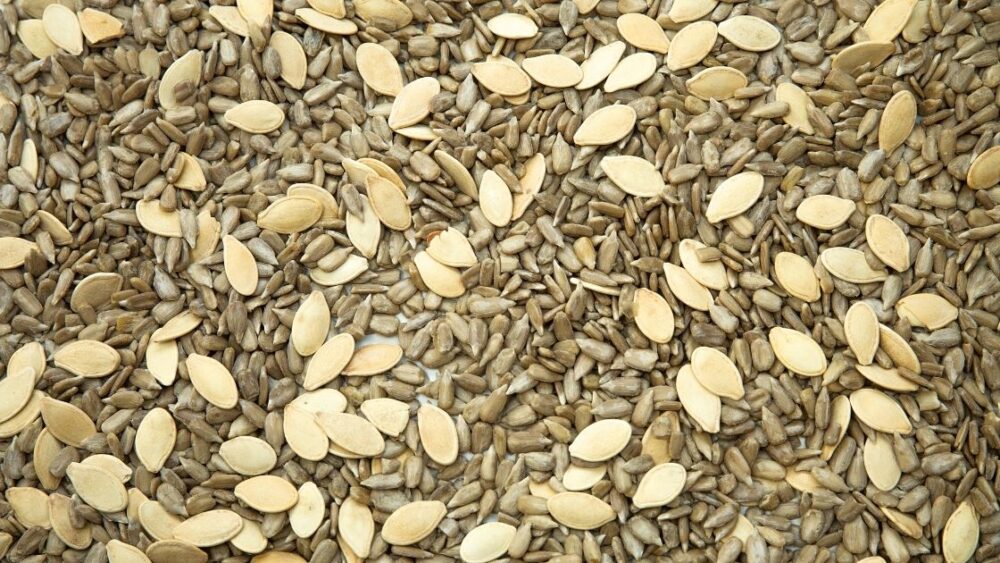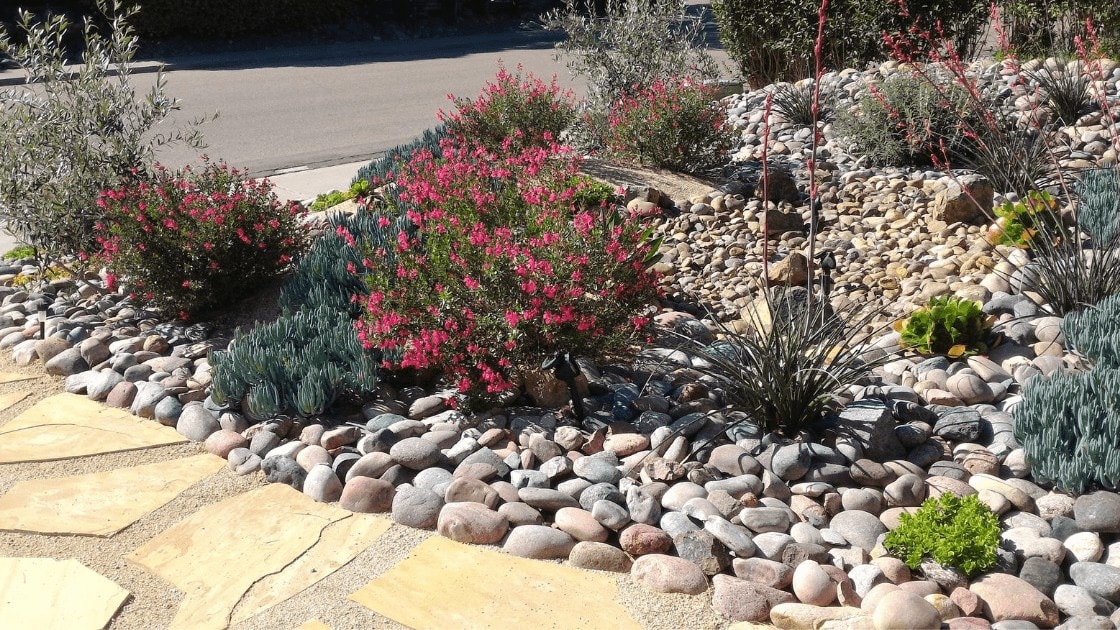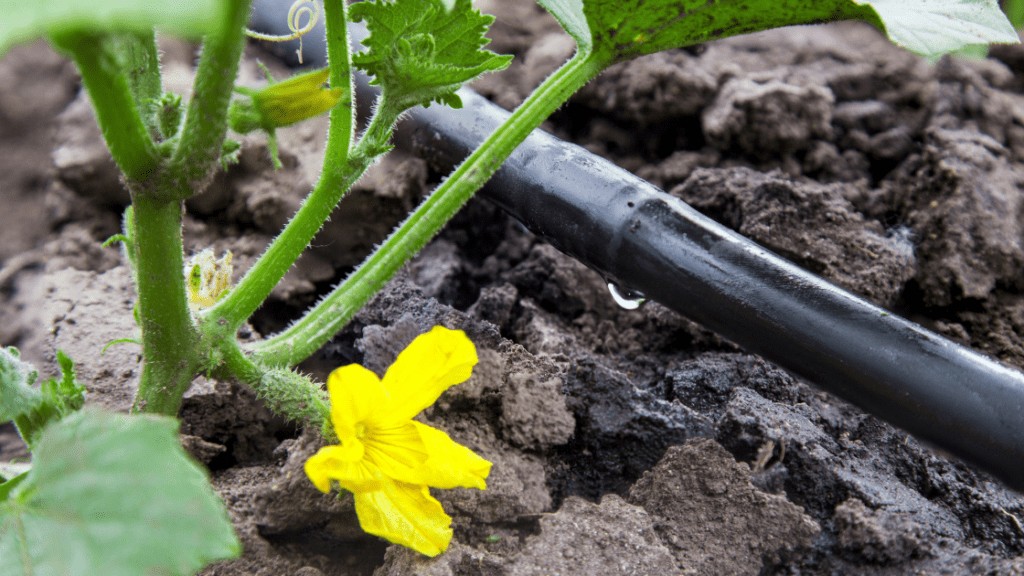
A drip irrigation system seems like the perfect watering solution for any garden – it’s relatively cheap to install, connects to any nozzle and consists of a timer and a tubing that runs through your garden and automatically supplies water at set interval directly to the root zone of your plants. In this article, we’ll take a closer look at the different types of drip irrigation systems, when you should consider installing such a system and for what types of gardens and plants they work best.
We’ll also explore some of the disadvantages of drip irrigation, the costs and labor involved and ultimately will help you decide if a drip irrigation will be worth it for you. Let’s get started!
What Are Drip Irrigation Systems?
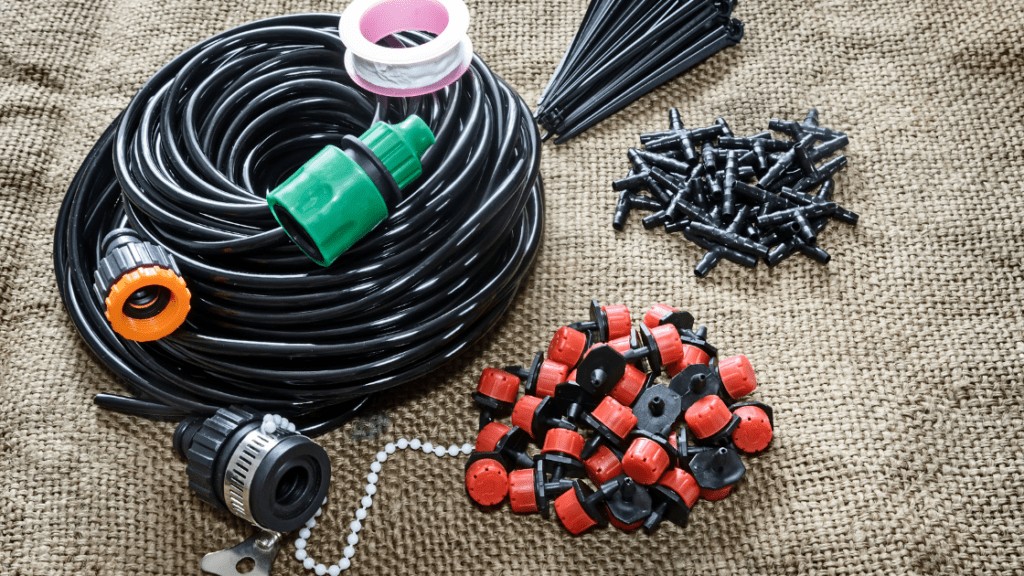
Drip irrigation systems deliver water to your plants automatically by ‘dripping’ at a set frequency.
Browse our Affiliate Products
Not all drip irrigation systems drip visibly and many have emitters that are buried in the soil. The actual system consists of long tubing, valves, emitters and a timer/controller. The emitters are nothing complex and are simply the part of the system from which the water actually ‘drips’ out of.
The controller/timer is usually very small and connects straight to a water outlet or a nozzle. It contains batteries and controls the water flow via the use of an electric solenoid valve.
Where Should You Use Drip Irrigation?
Drip irrigation systems can be used in any garden and for watering any type of plant. Even the cheapest drip irrigation systems have controllers with very wide frequency settings and can be set to run as infrequently as once per week or as often as 10 times per day.
Each watering cycle can be set to continue for anywhere from 2 or 3 minutes to two hours! This means that drip irrigation can be used to water any plant, anywhere. All systems can be easily adjusted to meet the demand of both drought-loving and moisture-loving plants.
Similarly, you can also use a standard sprinkler system that covers more areas in one shot. Click here to read our other article. Sprinkler Systems: Pros, Cons And Common Uses For Gardens.
Can You Regulate Drip Irrigation and Can You Use a Single System For Multiple Plants With Different Water Demands?
Because the drip emitters of the system can usually be individually regulated as well, a single drip irrigation system can be successfully set up to supply water to a wide variety of different plants with different water demands at the same time. Adjustable drip emitters are very cheap and are almost always made out of plastic – they cost as little as $15 for a 60-pack.
What Types of Drip Irrigation Systems Are There?
All automatic drip irrigation systems are similar and have a timer/controller, which turns the water on and off at a set time. They are usually classified into different types based on the types of water emitters they have.
The most common type of emitter sticks in the ground and functions like a tiny sprinkler, creating a very low-pressure jet of water. Other types of systems have a tubing, which is laid on top of the soil and contains many output holes, which drip water onto the soil surface.
And finally, the emitters, as well as the tubing of the irrigation systems can be buried underground, which automatically ‘injects’ the water deeper, eliminating a lot of the surface evaporation and further increasing water savings.
Micro-spray heads
Some drip irrigation systems can use high-pressure, micro spray heads. The purpose of this type of system is to cover a wide soil area with as few emitters as possible. Those types of systems are almost exclusively used for industrial watering of orchards or vines. They are not suitable for gardens with low-growing plants, as the output of the emitters will usually fall on the leaf canopy and not efficiently reach the ground.
Is Drip Irrigation Effective For Potted Plants?
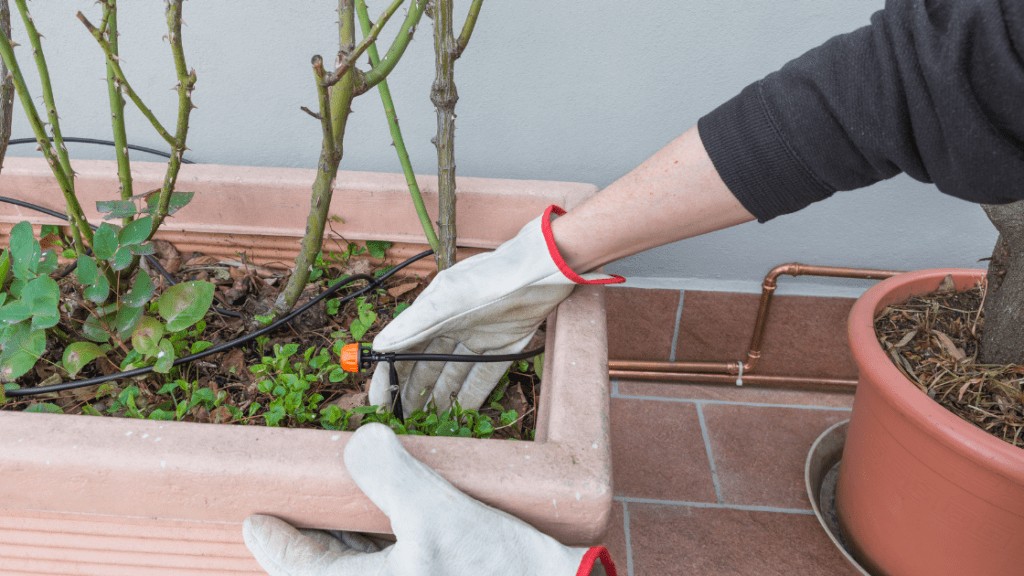
Drip irrigation can certainly be used for potted plants. Regular, garden systems can be used by properly arranging the different pots in a line and installing drip emitters in each pot. Using different types of more flexible, branching tubing can allow for a separate tube to run to each pot.
Lastly, there are whole irrigation systems specifically designed for potted plants. There are even indoor ones, which don’t connect directly to a water line and instead have electric pumps which take water out of a reservoir and redistribute it to your plants. Those systems are perfect for people who frequently take vacations and leave their potted plants alone with no one to water them.
As we already mentioned, all automatic irrigation systems have very wide timer settings, so adjusting the timer of a drip irrigation system in order to make it suitable for potted plants instead of garden plants isn’t a problem at all. If your wondering if drip irrigation does well with succulents, have a look at this article. Garden Ideas: How Effective Is Drip Irrigation on Succulents?
Are Drip Irrigation Systems Expensive And Are They Worth It?
Drip irrigation is almost always worth it, provided that you select the right system for you. As we mentioned, even indoor systems designed to water 5 to 20 indoor potted plants exist and they can be purchased for as low as $50!
A whole system for watering a backyard garden can be purchased for around the same price as well. Considering how much labor and energy such automatic systems save you, there is no reason not to get one!
Does It Save Water?
The main benefit of drip irrigation systems is that they save you a lot of time and energy having to manually water your plants. However, they also definitely make watering more efficient and save you water. If you’re used to using a simple nozzle to spray water all over your garden plants, drip irrigation will usually reduce your water usage by at least two-fold for the same amount of water that can actually be utilized by plant roots.
Watering nozzles are very inefficient and almost inevitably lead to a lot of over-watering and to a lot of water getting wasted on the leaves of the plants instead of reaching the soil.
Aside from saving water, drip irrigation has been proven to results in fertilizer savings. Using soluble fertilizer with a drip irrigation system requires the purchase of a separate fertilizer-injector, which is a simple device consisting of a container in which the fertilizer solution is poured, and some tubing and a few connectors.
When properly used, a fertilizer injector ensures that virtually all of the fertilizer reaches the root zone of the plant and as a result, fertilizer usage is reduced by around two-fold.
Is It Hard to Set Up?
Small, garden irrigation systems are not hard to set up and come with detailed instructions. The only part of the process which you should pay more attention to and make sure is done correctly is connecting the timer/controller to your water output.
The rest of the process is fun, easy and can involve a lot of experimentation when it comes to connecting and adjusting all the emitters and the timing of the watering. Tiny, indoor drip irrigation systems for potted plants don’t involve any setting up and the process is as simple as powering the controller, providing a container of water and installing the emitters in the different pots.
For a step by step guide, check out this informative article by instructables.com. Instructables.com/How-to-Install-Drip-Irrigation/
Pros of Drip Irrigation
The pros of drip irrigation are countless and we already mentioned a lot of them – it reduces water usage up to two-fold, reduces fertilizer use, saves you a lot of time and energy and allows you to precisely control the amount of water reaching the root zone of your plants. Here are some more unexpected benefits of drip irrigation:
Prevent weed growth: Watering your garden with a spray nozzle makes everything wet, which enables weeds to grow where they shouldn’t. Drip irrigation only supplies water to the roots of the plants we want.
No Land Preparation: Watering water-hungry vegetable crops usually requires channels to be created on the surface of the soil, through which the water runs. Drip irrigation works on all soil surfaces.
Less Pests and Diseases: Wetting the lower branches and stems of tightly-growing plants creates a very high humidity zone near the soil, which attracts all sorts of pests, insects and promotes the growth of molds. Properly installed drip irrigation avoids this problem by getting the water directly into the soil.
Cons of Drip Irrigation
Because drip irrigation is just an automatic way to water the root area of a plant, it has no intrinsic disadvantages. Disadvantages of drip irrigation arise only it’s not used properly or when an unsuitable system is chosen.
Risk of Over-Watering: Because the low-pressure water stream or dripping produced by drip irrigation emitters is very ‘weak’ it can be easy to misjudge the actual amount of water reaching the roots.
Because of this, many people set their irrigation timer too high initially and let it run too often for too long. This leads to problems which have nothing to do with the actual irrigation system and which are simply caused by too much watering in general.
Dry Spots In The Soil: Improper placement of emitters can result in dry spots in your soil. This problem is again easily solved by properly installing the system and ensuring a high enough density of emitters per soil area. Usually, turning on the system and observing where the water falls will easily tell you if you need to do any adjustments or add more emitters.
Mineral Buildup: If you live in an area with a high amount of solutes in your water, the electronic valves of the timer and the tiny holes of the emitters may eventually get clogged by mineral buildup. This is not a common problem and usually takes years to develop. Even if it does, the system can be flushed and the mineral buildup removed.
Tripping Accidents: This may seem funny, but can actually be something you may want to consider and think about while you’re installing the tubing for the system. Irrigation tubing is almost always black, because it contains black UV-absorbing dyes to protect the rubber from the sun rays. As a result, it can be difficult to notice the tubing laying on the ground, making it very easy for you to trip on it. This problem can of course be solved by running to the tubing very close to the ground and even burying it or covering it with a mulch layer.
Final Thoughts
A properly installed and timed drip irrigation system has no disadvantages and saves you a lot of water, fertilizer, time and energy. It’s the most efficient way to distribute water directly to the root zone of your plants. Considering how cheap drip irrigation systems can be and how easy they are to install, there is no reason not to get one, especially if you’re growing water-hungry vegetable crops.
